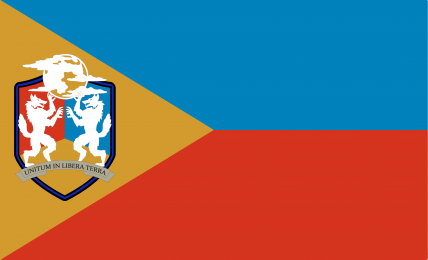
Advertisement

![]() by Tysoania » Fri Apr 20, 2018 10:32 am
by Tysoania » Fri Apr 20, 2018 10:32 am
Monsone wrote:the USSR is up to something

![]() by New Aldrin » Fri Apr 20, 2018 1:04 pm
by New Aldrin » Fri Apr 20, 2018 1:04 pm

![]() by GemNation » Fri Apr 20, 2018 4:41 pm
by GemNation » Fri Apr 20, 2018 4:41 pm

![]() by San Prospero » Fri Apr 20, 2018 5:06 pm
by San Prospero » Fri Apr 20, 2018 5:06 pm

![]() by Hippie Kiwis » Fri Apr 20, 2018 5:15 pm
by Hippie Kiwis » Fri Apr 20, 2018 5:15 pm

![]() by Alexandregia » Fri Apr 20, 2018 10:02 pm
by Alexandregia » Fri Apr 20, 2018 10:02 pm
Mensajero: Cousin of Ismail de Açora, dictator of Mouritania, assassinated in Cadiz by Berber immigrants | Castillan Mafia, help stop riots in Madrid suburbs | Ignacio Bermudéz, win boxing match against Vietnamese Antonio Thanh
![]() by The TWEZ » Wed May 30, 2018 8:13 am
by The TWEZ » Wed May 30, 2018 8:13 am

![]() by Hvitmannshjem » Wed May 30, 2018 6:00 pm
by Hvitmannshjem » Wed May 30, 2018 6:00 pm

![]() by Adamenia-khezvani » Wed May 30, 2018 7:27 pm
by Adamenia-khezvani » Wed May 30, 2018 7:27 pm

![]() by Sadakoyama » Mon Jun 04, 2018 1:37 pm
by Sadakoyama » Mon Jun 04, 2018 1:37 pm

![]() by Portcoven Island » Mon Jun 04, 2018 2:33 pm
by Portcoven Island » Mon Jun 04, 2018 2:33 pm

![]() by New Wolvers » Mon Jun 04, 2018 3:08 pm
by New Wolvers » Mon Jun 04, 2018 3:08 pm

![]() by Saint Mirana of Marmoreal » Mon Aug 13, 2018 7:20 pm
by Saint Mirana of Marmoreal » Mon Aug 13, 2018 7:20 pm

![]() by The Supreme Magnificent High Swaglord » Mon Aug 13, 2018 8:39 pm
by The Supreme Magnificent High Swaglord » Mon Aug 13, 2018 8:39 pm


![]() by New Melvonia » Tue Aug 14, 2018 11:56 am
by New Melvonia » Tue Aug 14, 2018 11:56 am

![]() by New Frog Butt » Tue Aug 14, 2018 2:57 pm
by New Frog Butt » Tue Aug 14, 2018 2:57 pm

![]() by Megelan » Wed Aug 15, 2018 12:02 pm
by Megelan » Wed Aug 15, 2018 12:02 pm


![]() by Markdokania » Fri Aug 17, 2018 2:36 pm
by Markdokania » Fri Aug 17, 2018 2:36 pm

![]() by Independopolis » Fri Aug 24, 2018 2:39 pm
by Independopolis » Fri Aug 24, 2018 2:39 pm

![]() by Quamenlau » Fri Aug 24, 2018 5:07 pm
by Quamenlau » Fri Aug 24, 2018 5:07 pm

![]() by The Republic of the Volga » Sat Aug 25, 2018 1:15 pm
by The Republic of the Volga » Sat Aug 25, 2018 1:15 pm
National News: Previously undiscovered bodies from the Russian Civil War discovered in Volgograd, as well as previously undiscovered flag
International News: First flag of the independent Komi Republic created, distancing its flag from Russia

![]() by Crylante » Mon Aug 27, 2018 2:19 pm
by Crylante » Mon Aug 27, 2018 2:19 pm

![]() by Andocara » Tue Aug 28, 2018 12:45 am
by Andocara » Tue Aug 28, 2018 12:45 am
Advertisement
Return to Factbooks and National Information
Users browsing this forum: Card Cleaver, Resaaria, Shearoa
Advertisement